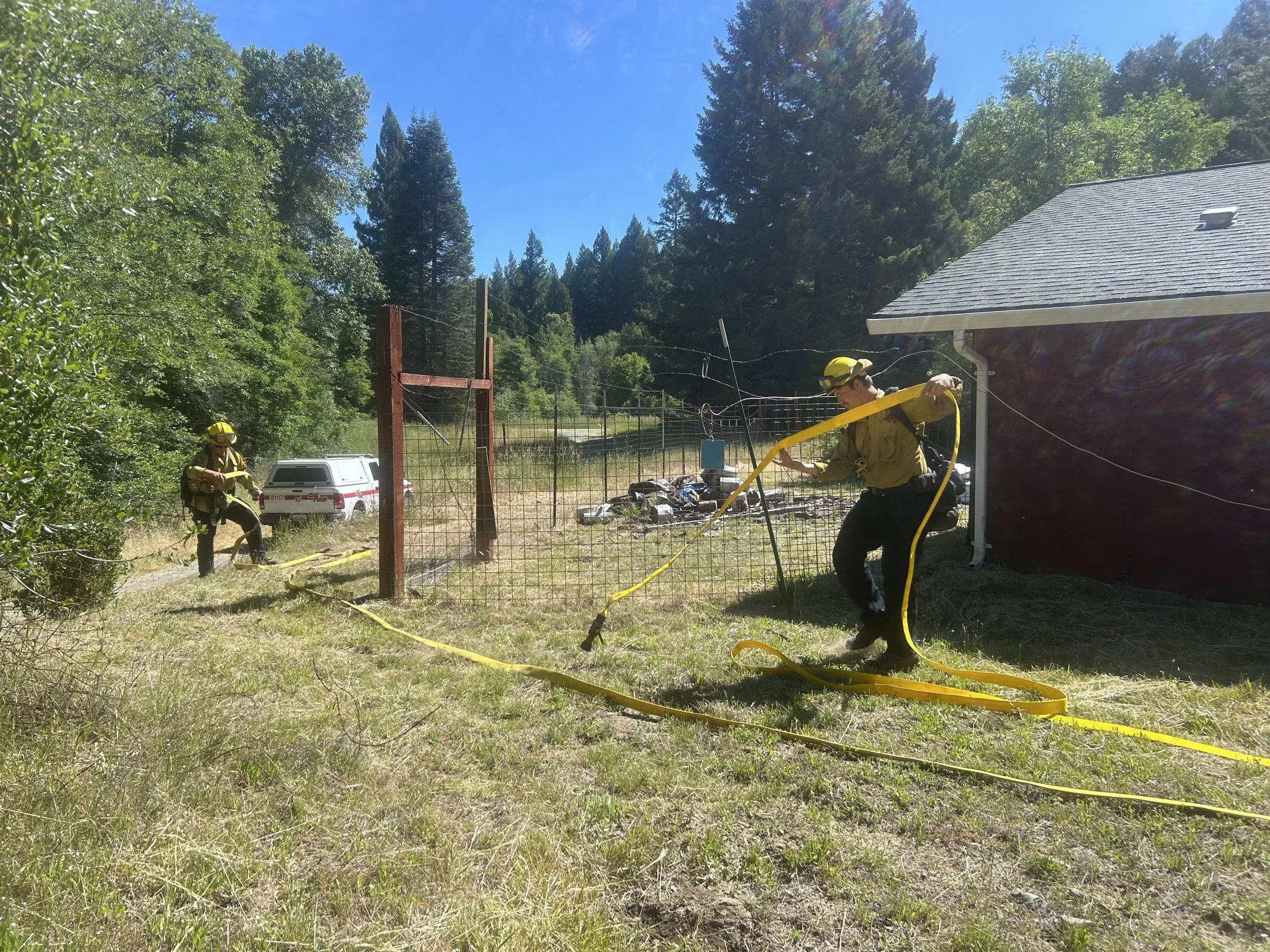Training for the Real Thing: Wildland Urban Interface Drill at Black Oak Ranch
On May 31, 2025, fire engines from across Mendocino County rolled into Black Oak Ranch just north of Laytonville for a full-scale wildfire training drill. The scene quickly transformed: a quiet clearing became a bustling hub of activity as crews set up an Incident Command Post and prepared for a day of hands-on training.
At 08:00 sharp, CAL FIRE Battalion Chief Shannon Thompson kicked things off with a morning briefing. One hundred and ten fire personnel circled up, listening intently as the day’s scenario unfolded. The mission: sharpen Wildland Urban Interface (WUI) tactics, strengthen interagency collaboration, and prepare for the real emergencies that Mendocino County summers too often bring.
The responders included CAL FIRE Mendocino Unit, Laytonville Volunteer Fire Department, Redwood Valley Calpella Fire District, Ukiah Valley Fire Authority, Hopland Fire Protection District, Leggett Valley Volunteer Fire Department, Piercy Fire Department, Little Lake Fire Department, Bell Springs Volunteer Fire Department, Redwood Coast Fire Protection District, and overhead air attack.
The radios crackled to life. Chiefs began broadcasting a simulated wildfire moving toward rural homes. Engines were dispatched to various addresses, where crews had to quickly assess: Do we stay and defend this home—or move on?
Those split-second decisions rely on clear criteria. Structures are triaged into three categories:
Not Threatened – The home is unlikely to ignite due to fire pattern, good defensible space, fire-resistant construction, and a safe refuge nearby.
Threatened, Defensible – The home needs active protection, and crews can safely stay and fight.
Threatened, Non-Defensible – The home has too many vulnerabilities to address and it’s too risky to stay. Lack of adequate homeowners preparation, safety zones or poor access means the priority is evacuation.
So how do you make your home defensible? Start at your driveway. Is it wide enough for a fire engine? Can they turn around? Is your home surrounded by clear defensible space, especially within the first 100 feet? What about the first 5 feet—often the most critical? These questions could determine whether a fire crew can stay and defend your home or must move on to one that’s more prepared.
Black Oak Ranch offered a challenging testbed, with winding roads, thick forests, and homes tucked deep into the landscape. Crews practiced finding hard-to-access structures, scouting water sources, and deploying structure protection tactics—just like they would in a real emergency.
Midway through the drill, a flyover by Air Attack added a dose of realism, echoing the high-stakes pressure of wildfire response. As mist from the plane filled the air, firefighters worked to prepare a well-maintained home: clear defensible space, fire-resistant landscaping, and limbed trees all signaled a fighting chance. The Chief gave the green light—this one was worth defending.
The day wrapped up with a debrief and shared lessons, as crews swapped insights over brown bag lunches provided by the Mendocino County Fire Safe Council, thanks to Measure P funding. A sandwich, some reflection, and a stronger county-wide firefighting force—now better prepared to protect what matters most.
A big thank you to Long Valley Fire Department for organizing the training in collaboration with CAL FIRE and to the landowners of Black Oak Ranch for helping to coordinate such a successful and educational training.









